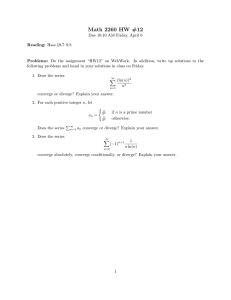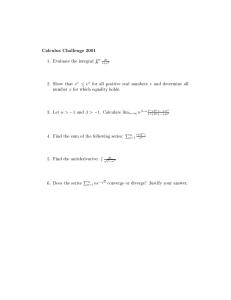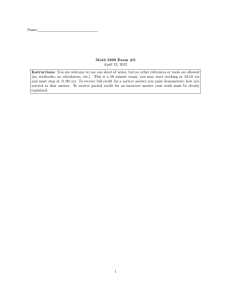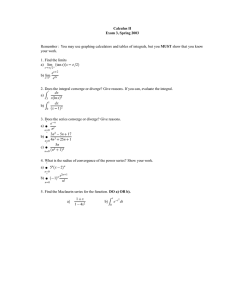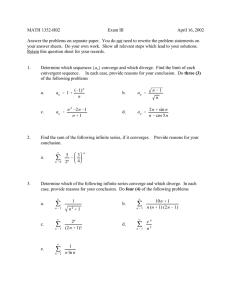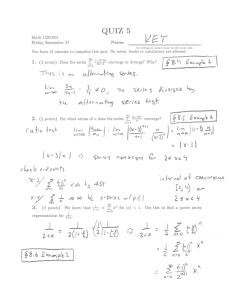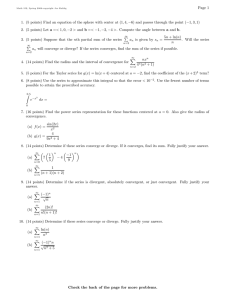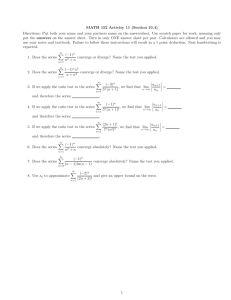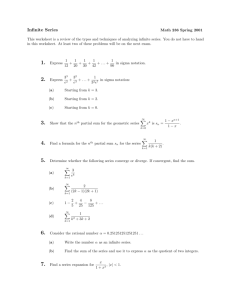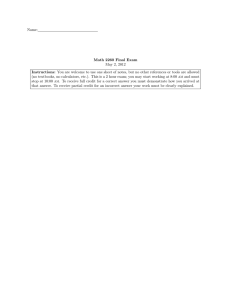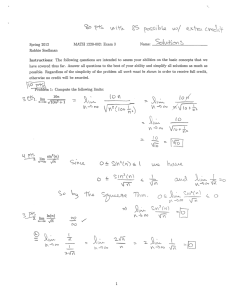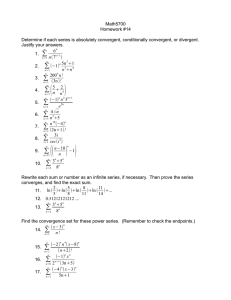Lesson 18. Dynamic Stability 1 Last time...
advertisement
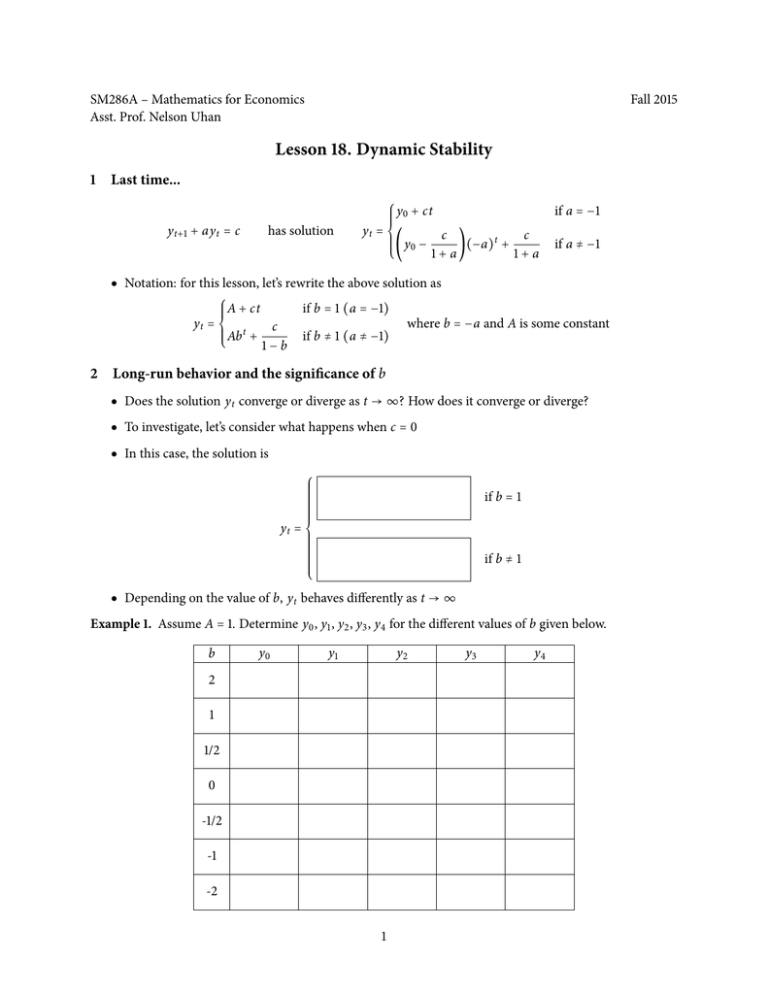
SM286A – Mathematics for Economics Asst. Prof. Nelson Uhan Fall 2015 Lesson 18. Dynamic Stability 1 Last time... y t+1 + ay t = c has solution ⎧ y0 + ct ⎪ ⎪ ⎪ ⎪ yt = ⎨ c c ⎪ ⎪ )(−a)t + (y0 − ⎪ ⎪ 1+a 1+a ⎩ if a = −1 if a ≠ −1 ● Notation: for this lesson, let’s rewrite the above solution as ⎧ ⎪ if b = 1 (a = −1) ⎪ ⎪A + ct yt = ⎨ where b = −a and A is some constant c ⎪ ⎪ Ab t + if b ≠ 1 (a ≠ −1) ⎪ ⎩ 1−b 2 Long-run behavior and the significance of b ● Does the solution y t converge or diverge as t → ∞? How does it converge or diverge? ● To investigate, let’s consider what happens when c = 0 ● In this case, the solution is ⎧ ⎪ ⎪ ⎪ ⎪ ⎪ ⎪ ⎪ ⎪ ⎪ ⎪ ⎪ yt = ⎨ ⎪ ⎪ ⎪ ⎪ ⎪ ⎪ ⎪ ⎪ ⎪ ⎪ ⎪ ⎩ if b = 1 if b ≠ 1 ● Depending on the value of b, y t behaves differently as t → ∞ Example 1. Assume A = 1. Determine y0 , y1 , y2 , y3 , y4 for the different values of b given below. b y0 y1 y2 2 1 1/2 0 -1/2 -1 -2 1 y3 y4 ● From Example 1, we can determine some trends ● When b < 0, y t is ● When b > 0, y t is ● When ∣b∣ < 1, y t is ● When ∣b∣ > 1, y t is ● These trends still hold for different values of A and c Example 2. Describe the time path given by y t = 5(−1/10)t + 3. Example 3. Describe the time path described by the difference equation y t+1 + 2y t = 9. 3 The role of A ● If the magnitude of A changes: ● If the sign of A changes: 2
